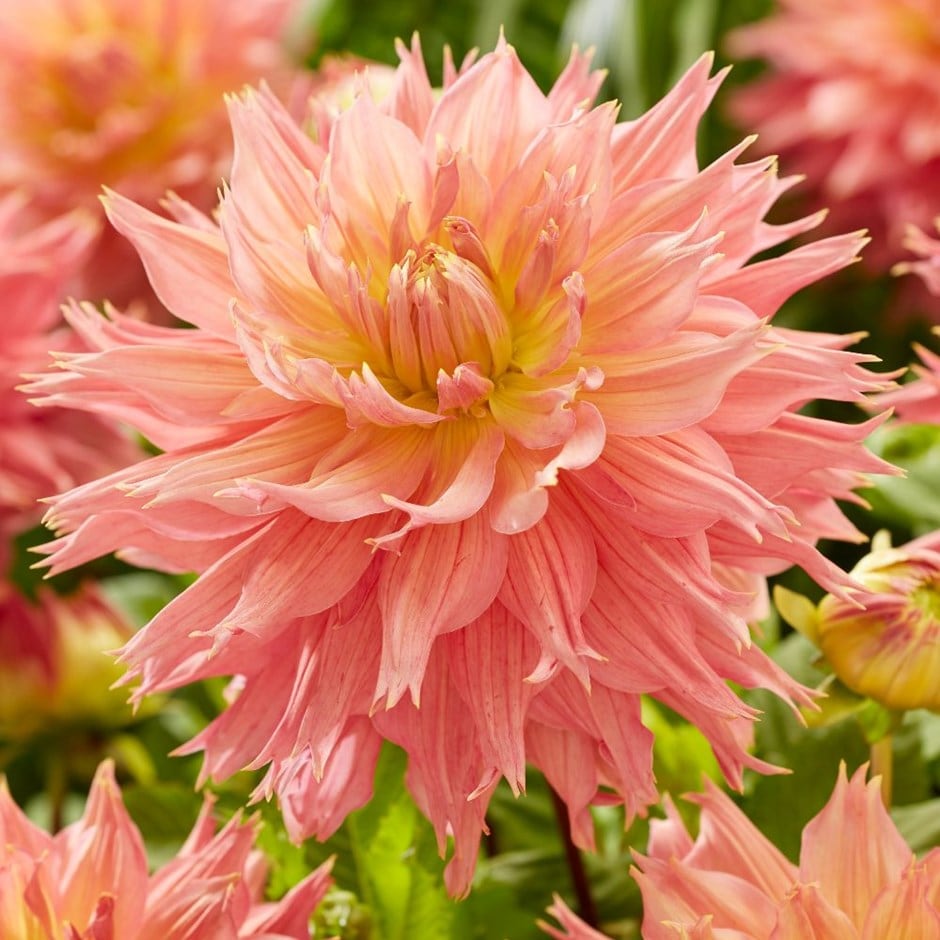Dahlia 'Omega'
fimbriata (dinnerplate) dahlia
This bulb dies back after flowering each year and enters a period of rest ahead of regrowth the following season.
- Position: full sun
- Soil: fertile, humus-rich soil
- Rate of growth: average
- Flowering period: July to September
- Hardiness: half hardy (may need winter protection)
A real ‘fruit salad’ blend of mango, apricot and rose, ‘Omega’ is a stand out dahlia, whose 15-20cm (6-8”) wide blooms shift and change as the flower develops. Best planted in a sheltered border or container, this ‘Fimbriata’ or cactus-like tender perennial will surprise and delight over the summer. - Garden care: Dahlia tubers can be planted outside after frost, or started off in pots under glass in late winter to early spring. Plant them horizontally approximately 12cm deep, making sure the ‘eyes’ are uppermost. Allow enough room between each tuber so the plants can grow and spread to their full size without being overcrowded. While in growth, provide a high-nitrogen liquid feed each week in June, then a high-potash fertiliser each week from July to September. Stake with canes or brushwood if it becomes necessary. In mild areas, leave them in situ over winter, but protect the crown with a generous layer of dry mulch. In colder areas, carefully lift and clean the tubers once the first frosts have blackened the foliage and allow them to dry naturally indoors. Then place the dry tubers in a shallow tray, just covered with slightly moist potting compost, sand or vermiculite and store in a frost-free place until planting out again.
- Humans/Pets: Ornamental bulbs - not to be eaten

